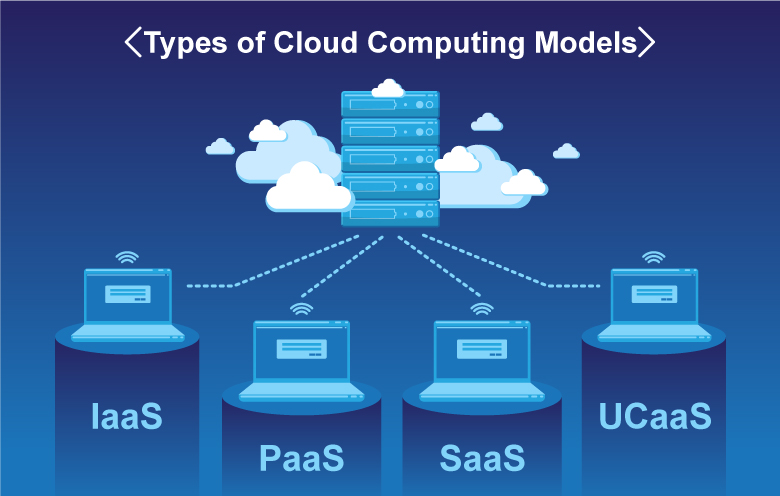Drive Advancement: Taking Advantage Of the Power of Cloud Services
In the fast-paced landscape of modern-day organization, taking advantage of the power of cloud solutions has come to be an important element for organizations intending to drive advancement and maintain an one-upmanship. The capacity to scale resources dynamically, embrace cutting-edge technologies flawlessly, and improve development processes effectively can significantly affect a company's capability to adapt and introduce. As we check out the elaborate partnership between cloud services and development, interesting insights on exactly how cloud remedies change traditional organization methods and lead the way for groundbreaking improvements will be revealed.
Advantages of Cloud Services
Cloud solutions offer numerous benefits to services and individuals looking for adaptable and effective options for their electronic needs. One of the essential advantages of making use of cloud services is the cost-effectiveness they offer. By transferring to the cloud, companies can remove the requirement for costly on-premises hardware and maintenance costs, rather going with a pay-as-you-go model that aligns with usage. This scalability enables organizations to readjust resources based on demand, resulting in optimal expense management.
Additionally, cloud services boost ease of access and collaboration amongst groups. With information kept in the cloud, workers can firmly access files and applications from anywhere with an internet connection, advertising remote job abilities and boosting productivity. Real-time cooperation functions make it possible for several individuals to function on records all at once, promoting smooth teamwork despite physical location.
One more advantage of cloud solutions is the boosted information safety and security and catastrophe recovery they offer. Cloud providers execute innovative security measures to safeguard data from cyber hazards, guaranteeing conformity with market policies. Furthermore, automated back-ups and healing options reduce the threat of data loss as a result of unexpected events, offering peace of mind to users.
Cloud Movement Methods
Transitioning to cloud services involves thorough preparation and tactical implementation to make sure a effective and smooth migration process. When moving their operations to the cloud, there are several cloud migration approaches that organizations can think about. One typical technique is the 'Rehost' method, where applications are raised and moved to the cloud with minimal changes. This technique fasts yet might not completely enhance cloud benefits. The 'Replatform' method involves making some cloud optimizations during migration, such as updating the application style to benefit from cloud-native attributes. universal cloud Service. For an extra detailed change, the 'Refactor' strategy entails rearchitecting applications to be cloud-native, boosting scalability and performance. Furthermore, the 'Repurchase' method includes replacing existing software with cloud-based choices, while the 'Retire' technique involves deactivating redundant applications. Choosing the best migration method depends upon elements like expense, timeline, and preferred outcomes, needing a careful evaluation of each option's challenges and advantages.
Enhancing Cooperation in the Cloud
Enhancing team partnership via cloud-based tools can substantially enhance performance and enhance communication within organizations. By leveraging cloud services, teams can interact flawlessly no matter their physical places, making it possible for real-time cooperation on jobs. Cloud-based interaction tools such as Slack, Microsoft Teams, or Google Workspace supply a centralized platform for group participants to share documents, exchange concepts, and coordinate jobs effectively. These devices use attributes like instant messaging, video clip conferencing, data sharing, and job management, boosting synergy and minimizing dependence on standard communication methods like emails.

Protection Considerations for Cloud Adoption
Exactly how can companies guarantee the durable protection of their information when embracing cloud solutions? Protection factors to consider are vital in the fostering of cloud solutions. Normal protection audits and monitoring of the cloud environment aid in finding and mitigating any type of security violations without delay.

Cloud-Native Innovation Practices
In the realm of cloud computing, accepting cloud-native technology techniques is crucial for organizations striving to maximize their digital infrastructure and improve operational performance. Cloud-native development methods include their website developing applications particularly for cloud environments, leveraging the scalability, versatility, and agility that cloud services provide. Deliberately applications with cloud-native principles in mind, such as microservices style, containerization, and orchestration, organizations can improve their growth procedures, enhance resource application, and respond better to altering market demands.
Moreover, cloud-native advancement practices promote constant assimilation and constant shipment (CI/CD) pipes, enabling automated testing, release, and monitoring of applications. This iterative technique fosters faster development cycles and boosts general software application top quality. Additionally, using serverless computer and took care of services allows organizations to focus on establishing core company capabilities while offloading infrastructure management jobs to cloud company.
Basically, accepting cloud-native development methods equips companies to drive development, speed up time-to-market, and remain competitive in today's swiftly progressing electronic landscape.
Verdict

As we check out the detailed connection between cloud services official source and technology, appealing understandings on exactly how cloud remedies change conventional service techniques and lead the way for groundbreaking improvements will be check exposed. - universal cloud Service
There are several cloud migration methods that organizations can consider when relocating their operations to the cloud. Cloud-native advancement practices involve creating applications particularly for cloud settings, leveraging the scalability, flexibility, and dexterity that cloud solutions use. Furthermore, the use of serverless computer and handled solutions permits companies to focus on developing core company performances while unloading framework management tasks to cloud service providers.
It is vital for firms to consider cloud migration strategies, enhance collaboration in the cloud, and prioritize security measures to guarantee successful fostering of cloud solutions and drive advancement within their organization.